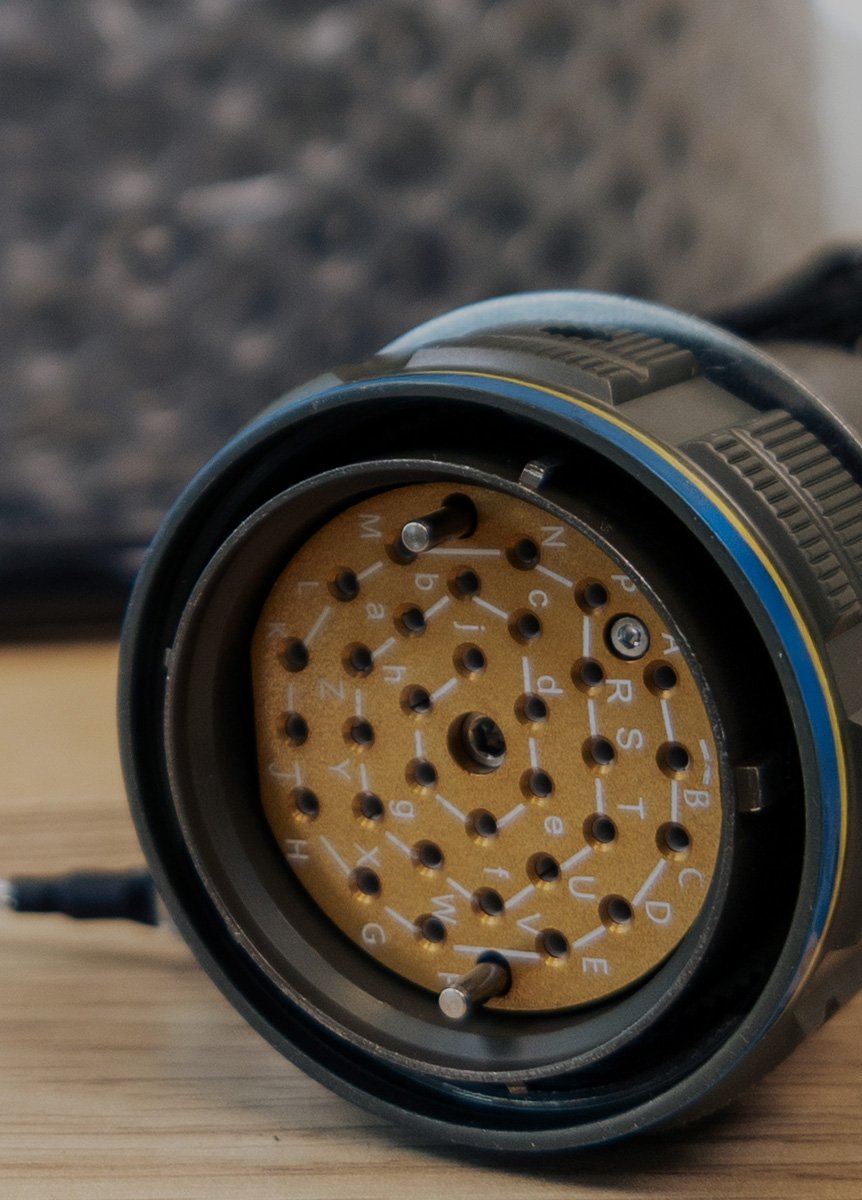The expanded beam (EB) technology is increasingly being adopted in applications requiring high performance, high reliability connections, such as military, aerospace and industrial settings like oil & gas, mining, broadcast and automation.
Traditional fiber optic connectors use physical contact between two fiber ends to transmit optical signals. While effective, this design is prone to performance degradation over time due to dust, scratches, and other contaminants on the fiber end faces.
Expanded beam connectors, by contrast, eliminate the need for direct fiber to fiber contact by expanding and then refocusing the light beam, improving both the reliability and longevity of the connection.
How it works
Expanded beam connectors utilize optical lenses to expand the fiber’s optical beam, typically at the connector interface. The EB is then refocused onto the receiving fiber using a lens system. This technique avoids the direct physical contact found in traditional connectors, significantly reducing the risks associated with contamination and misalignment.

Expanded beam connection

Traditional fiber connection
Advantages of Expanded Beam technology
Reduced sensitivity to contamination
Since the fiber ends never come into physical contact, contaminants like dust or oils do not degrade the performance of the connection. This is especially beneficial in environments with high levels of dust or where connectors are frequently mated and unmated.

Surface area comparison between traditional fiber interface and expanded beam.
Enhanced durability and reliability
While the loss is minimal, there is still a slight increase in insertion loss when compared to traditional fiber optic physical contact connectors.
However, EB connectors can withstand up to 3000 matings without any loss degradation and offer a much larger tolerance for misalignment as the expanded beam allows for easier coupling between fiber optic cables and their receivers, even if the fibers are not perfectly aligned.
Physical contact connectors will struggle to reach a third of the mating figure mentioned above and any misalignment, contamination or repetitive matings can lead to significant degradation, higher insertion loss and lower reliability.
Easier cleaning and maintenance:
Since there is no direct fiber to fiber contact in expanded beam technology, the risk of contamination, scratches or damage to the fiber end face is significantly reduced. This leads to easier maintenance and cleaner connections, enhancing system longevity.

Conclusion
Expanded beam connectors are an advanced optical connection solution that offer superior performance in harsh environments where traditional fiber optic connectors may fail.
By reducing physical contact, minimizing contamination risks, and offering improved durability against environmental stresses, these connectors are indispensable in industries such as military, aerospace, broadcast, mining and industrial automation.
Adhering to best practices during selection, installation, and maintenance will ensure that these connectors deliver optimal performance over their operational life.
For more information or to discuss specific requirements, please contact the Hexatronic Harsh Environment Connectivity technical support team.























